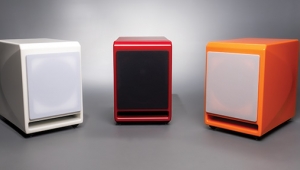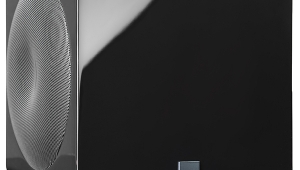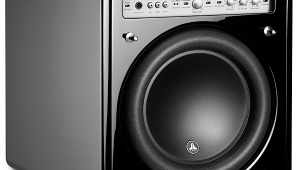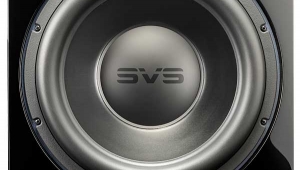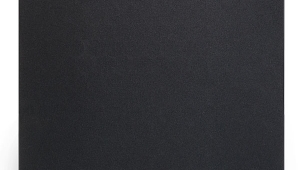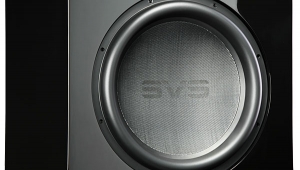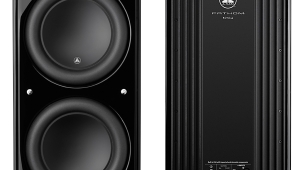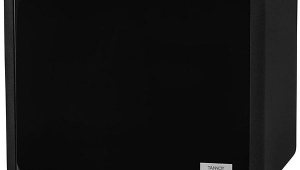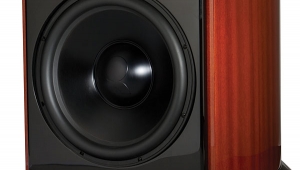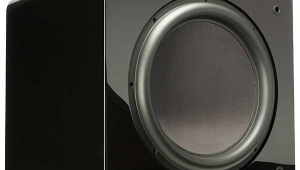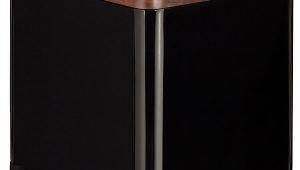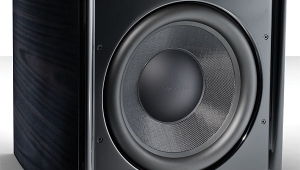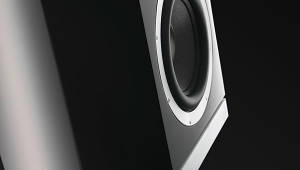| Columns Retired Columns & Blogs |
JL Audio Fathom f212 powered subwoofer Page 3
JL Audio's ARO first tests the room, then applies single-band equalization to tune out its most prominent deviation from a linear frequency response. With the rest of the stereo system shut off, ARO automatically generates its own test signals. But before I began, I made certain to turn off my dishwasher and air-conditioner, which can generate subsonic artifacts of their own that can mislead the ARO algorithm. I plugged the ARO calibration mike's cable into the right Fathom f212's front control panel, cranked up the sub's Master level control to its maximal (4 o'clock) position, set all front-panel filters to Off or Default, punched the f212's Calibrate button, carried the mike to my listening chair, sat down, and held the mike at ear level.
Even at that maximal output setting, the f212's ARO sequence shut off, and its Calibrate LED flashed once per second, which means "f212 output too low." Standing right next to the subwoofer and holding the mike set off ARO's "over-signal" warning (three flashes per second). I finally got it right when I started up ARO while standing with the mike in my hand about 5' from the subwoofer. When the five test tones were followed by very low, sustained beeps and no flashing LEDs, I hurried to my listening chair, sat down, and again held the mike at ear level. The full battery of ARO tests—slowly stepped subterranean test tones followed by loud ascending sweeps—ran for two minutes, rattling everything in the room that wasn't tied down. Then the f212 fell silent, and its Calibrate LED stayed on continuously to indicate that it was done. Running the Velodyne DD-18 sweep through the right f212 alone then revealed a smoother room response, with the 50Hz peak reduced.
The Quads still muted, I muted the right f212 and unmuted the left. This sub's uncorrected room sweep had revealed a prominent suckout at 60Hz, followed by a big peak at 80Hz. When I then ran ARO, its single-band equalizer reduced the 80Hz peak significantly. I then further corrected the remaining anomaly by setting the sub's front-panel low-pass control to 40Hz.
I then unmuted all of the Bryston crossover's outputs. The resulting frequency-response curve, as measured by the Velodyne DD-18, was impressively flat from 20 to 200Hz (fig.3). Set up in this manner, the Quad-JLA system played the sustained passage for low organ pedals at the end of James Busby's performance of Herbert Howells' Master Tallis's Testament, from Pipes Rhode Island (CD, Riago 101), as a pure, clean, sustained note, without any activation of room modes. Voil‡! The system had a more natural deep-bass response, with minimal excitation of room modes, while the soundstage image was significantly deeper and wider.
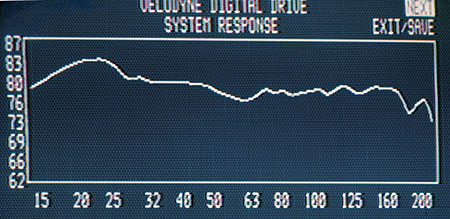
Fig.3 Quad ESL-989 in-room response with two JL Audio Fathom f212s after running ARO, and setting low-pass filter of left Fathom f212 to 40Hz (25dB vertical range).
Music
Once level-matched to the Quad ESL-989s and automatically optimized to my room, the two Fathom f212s produced rock-solid deep bass, but no chestiness or honk with male voices. Even playing percussion and orchestral music at high levels, the low bass soundedwll-defined and clean.
The f212s did best at making the deep bass of pipe-organ music sound more powerful and tuneful; as KR put it in his September 2009 column (Vol.32 No.9), these recordings now "sounded real, not merely big." Time after time, the f212s enabled my otherwise bass-shy Quads to deliver the full intensity and emotional impact of pipe organs. My system produced musically tight, tuneful, pleasing deep bass from a number of my favorite recordings: a clear reproduction of the sustained 25Hz organ note in the Introduction of Richard Strauss's Also sprach Zarathustra, performed by Erich Kunzel and the Cincinnati Pops, on Time Warp (CD, Telarc CD-80106); the organ's tight, thunderous low C (32Hz) at the end of Howells' Master Tallis's Testament, which shuddered the air in my room and rattled loose objects; the fullness and air of the 32' pedal notes in Gnomus, from Jean Guillou's performance of his own transcription for organ of Mussorgsky's Pictures at an Exhibition (CD, Dorian DOR-90117); and the massive, almost infrasonic pipe organ note that ends Timothy Seelig and the Turtle Creek Chorale's recording of John Rutter's Lord, Make Me an Instrument of Thy Peace, from Requiem (CD, Reference RR-57CD).
Besides their power, the Fathom f212s played with superb pitch definition, making it possible for me to easily follow the scale passages in the first movement of Saint-SaÎns' Symphony 3, "Organ," with organist Oliver Latry, Christoph Eschenbach, and the Philadelphia Orchestra (CD, Ondine ODE 1094-5).
Like the pedal notes of a pipe organ, synthesized bass notes are used in film scores to add energy, suspense, and emotional weight to intensify the ambience and atmosphere. The Fathom f212s delivered the deepest, most powerful synthesizer chords, shaking my listening room as I listened to a variety of soundtrack recordings: the otherworldly mantras of the Gyuto monks in "Sand Mandala," from Philip Glass's score for Kundun (CD, Nonesuch 79460-2); the thudding, ponderous footsteps of the ghosts in "First Haunting/The Swordfight," from Horner's score for Casper (CD, MCA MCAD-11240); the seismic tremors of deep, massive bass chords in "The Carnotaur Attack," from James Newton Howard's music for Dinosaur (CD, Walt Disney 50086 06727); and the growling, explosive, brain-jarring mixture of synth and percussion that drives "Assault on Ryan's House," from Horner's music for Patriot Games (CD, RCA 66051-2).
- Log in or register to post comments
